- 17,000 British nationals could be evacuated as last ditch efforts are made to stop nuclear catastrophe
- Rich scramble to book private jets out the country as fleeing passengers pack Tokyo airport
- French say Japanese have 'visibly lost essential control' as they urge their citizens to get out
The advice - echoed by other countries around the world - followed a meeting of the Cabinet's emergency Cobra committee to discuss the meltdown-threatened Fukushima nuclear plant.
It heightened suspicions that the crisis at the plant - already ranked the second-worst nuclear disaster after Chernobyl - is worse than the Japanese authorities have publicly let on. Yesterday 'last-ditch' efforts were continuing at Fukushima to prevent a catastrophe with a Japanese army helicopter dumping water onto troubled nuclear reactor.
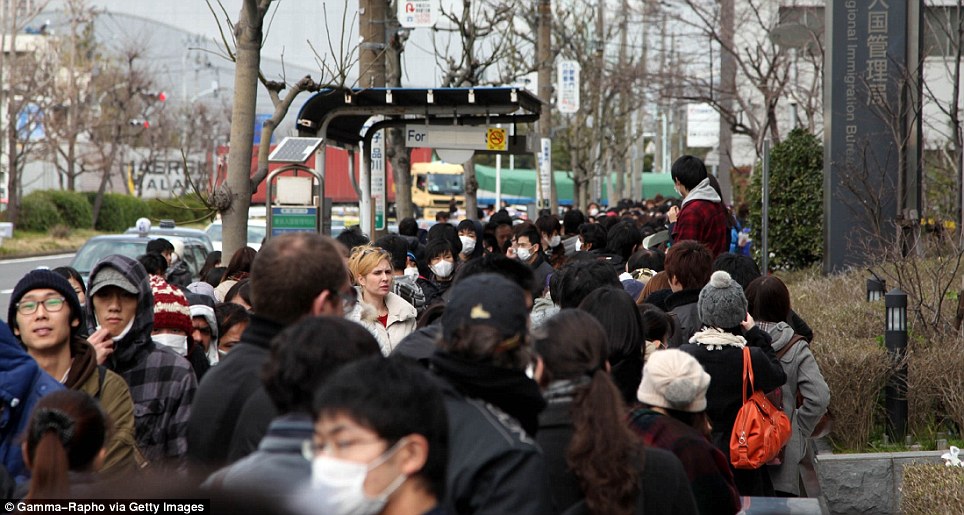
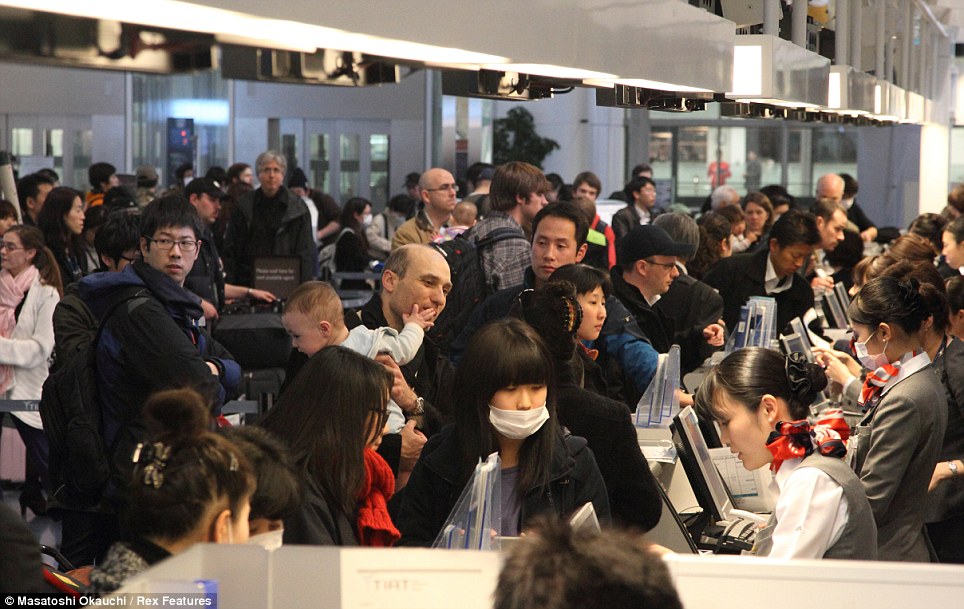
A CH-47 Chinook helicopter began dumping seawater on the damaged reactor of Unit 3 at the Fukushima complex at 9.48am local time, said defense ministry spokeswoman Kazumi Toyama. The aircraft dumped at least four loads on the reactor, though much of the water appeared to be dispersed in the air.
The dumping was intended both to help cool the reactor and to replenish water in a pool holding spent fuel rods, Toyama said. The plant's owner, Tokyo Electric Power Co., said earlier that the pool was nearly empty, which might cause the rods to overheat.
Last night an official at Japan's Nuclear and Industrial Safety Agency said that radiation levels at the plant had fallen steadily over the past 12 hours.
However, ministers were due to hold further talks last night on whether an immediate evacuation from Japan should be considered.
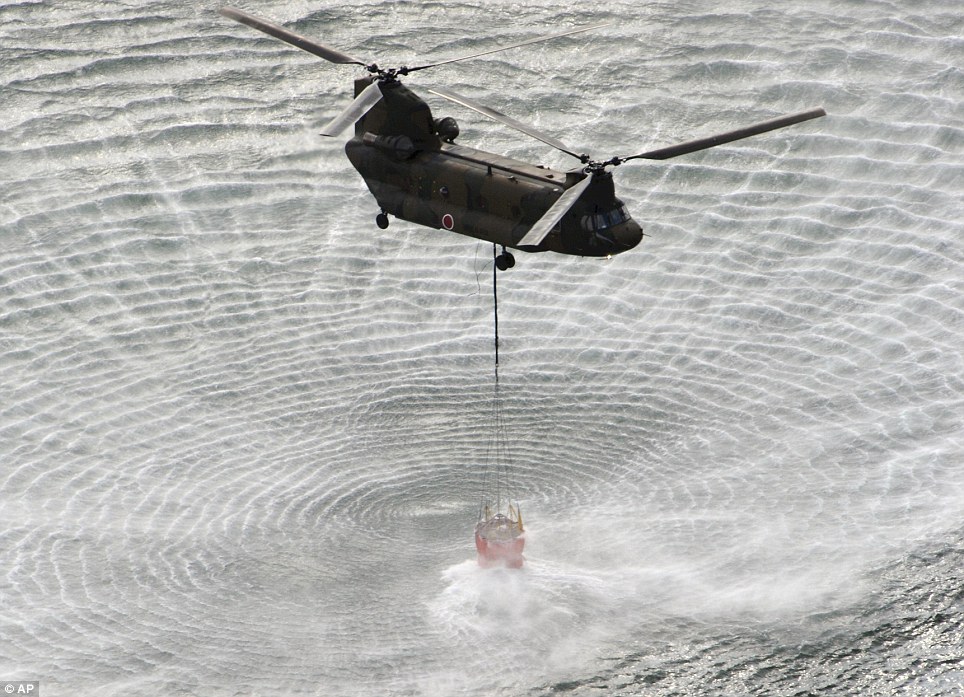
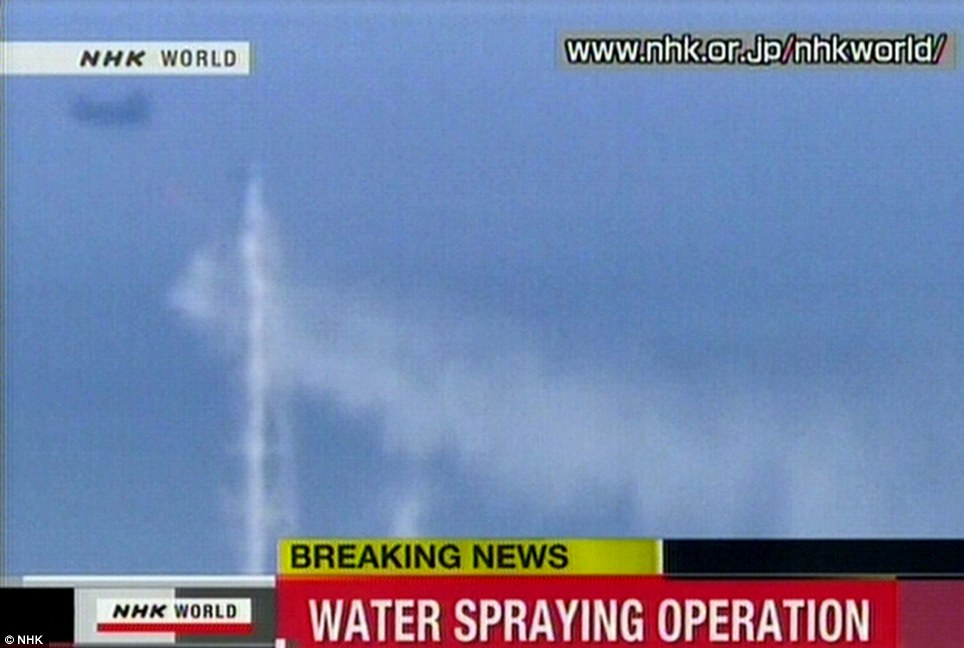
But officials conceded that in reality most Britons will have few options but to leave Japan if they want to heed the advice.
Thousands of Japanese citizens are already fleeing Tokyo for the south.
Officials yesterday insisted there was no significant risk to human health in Tokyo, which is less than 140 miles south of Fukushima.
But Europe's energy chief Guenther Oettinger warned the huge plant was 'effectively out of control' - sparking fears of a meltdown, which could send a radioactive cloud into the atmosphere.
He warned of 'further catastrophic events, which could pose a threat to the lives of people on the island'. Mr Oettinger predicted the dire situation could take a further turn for the worse 'within hours'.
The Japanese public was also unconvinced by its government's reassurances. The mayor of Minimisoma, which is 12 miles from the Fukushima plant, said: 'We weren't told when the first reactor exploded, we only heard about it on television. The government doesn't tell us anything. We are isolated. They're leaving us to die.'
The Foreign Office insisted there was 'no real human health issue' outside the 20-mile exclusion zone surrounding the plant.
But it warned that panic caused by the crisis meant there were 'potential disruptions to the supply of goods, transport, communications, power and other infrastructure' in Tokyo.
Officials confirmed that contingency plans were being drawn up for an airlift of British nationals if the crisis worsens. Talks have already been held with airlines about laying on extra flights.
The warning came as the Japanese authorities made increasingly desperate attempts to contain the crisis at the Fukushima plant.
Helicopters deployed to dump water on the plant were pulled out amid concerns about soaring radiation levels.
Officials were considering using water cannon - normally used to control riots - in a desperate bid to cool the overheating reactors, which have suffered a series of explosions.
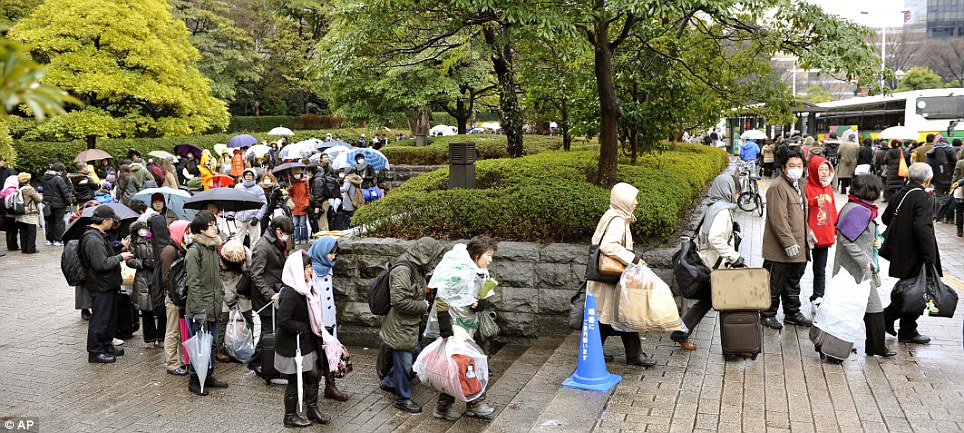
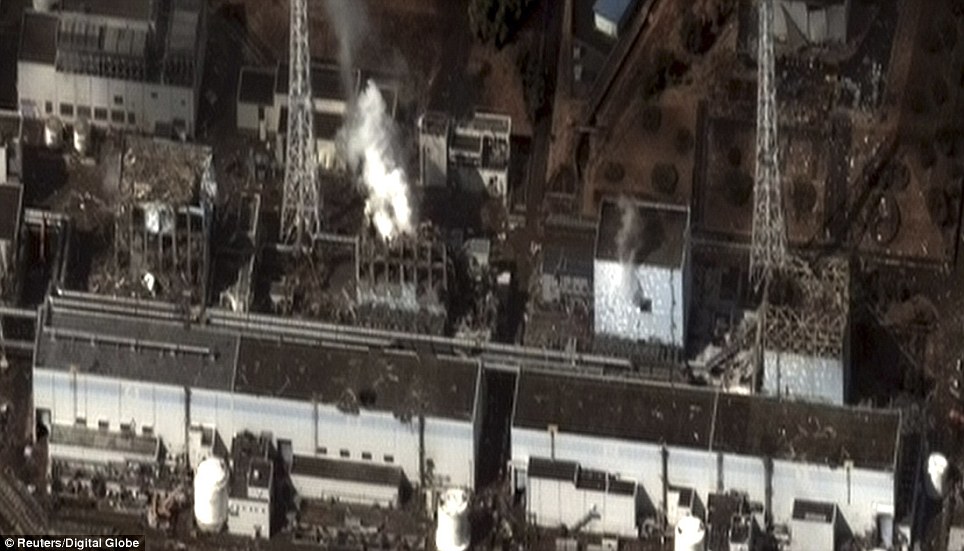
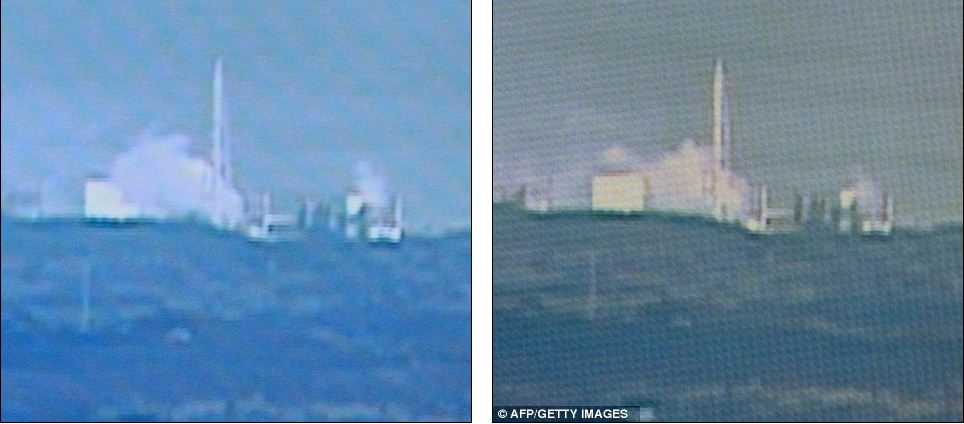
France, one of the world's leading users of nuclear energy, said its citizens should get out Japan. Industry Minister Eric Besson said: 'Let's not beat about the bush. They have visibly lost essential control. That is our analysis, even if it's not what they are saying.'
French Environment Minister Nathalie Kosciusko-Morizet described the crisis as 'catastrophic' and said the latest information 'does not lead to optimism'.
There are 2,000 French still in the Tokyo area. Australia also urged its citizens to consider leaving Tokyo and the quake-affected areas.
And the U.S. advised all Americans living within 50 miles of Fukishima to evacuate or take shelter indoors.
Russia said the crisis was moving towards a grim conclusion.
Sergei Kiriyenko, who presides over the bulk of the country's nuclear facilities, declared: 'Unfortunately, the situation is developing under the worst scenario.'
Explosions rocked the site on Saturday and Monday when hydrogen gas - released to ease pressure inside the sealed cores - ignited at reactors 1 and 3. On Monday hydrogen blasts hit reactor 2 and reactor 4, damaging its roof.
Experts believe that the reactor 2 blast cracked the 80-inch steel and concrete containment unit surrounding the radioactive core - triggering a radiation leak.
Last night temperatures were rising out of control in reactors 5 and 6. Scientists are also concerned about falling water levels in two tanks used to store and cool spent fuel rods.
Water in at least one of the pools is boiling. If its rods are exposed to the air they could overheat, releasing radioactive material into the air.
Steam rose from the pool alongside reactor 3 yesterday. Nuclear experts said the solutions being proposed to prevent leaks were 'last-ditch efforts'.
But they added that if temperatures inside the reactors are kept down, the plant could be safe within a week.
The chief of the U.S. Nuclear Regulatory Commission (NRC), Gregory Jaczko, warned that all the cooling water had gone from one of the spent fuel pools.
That would mean there is nothing to stop the fuel rods getting hotter and ultimately melting down and if the outer shell of the rods ignite with enough force, it could propel the radioactive fuel inside over a wide area.
'I hope my information is wrong,' said Jaczko. 'It's a terrible tragedy for Japan.'
Japan's nuclear safety agency and Tokyo Electric Power, which operates the complex, denied the claim and utility spokesman Hajime Motojuku said the 'condition is stable' at Unit 4.
Earlier, however, another utility spokesman contradicted that by saying the officials' greatest concerns were the spent fuel pools, which lack the protective shells that reactors have.
'We haven't been able to get any of the latest data at any spent fuel pools,' said Masahisa Otsuki.
'We don't have the latest water levels, temperatures, none of the latest information for any of the four reactors.'
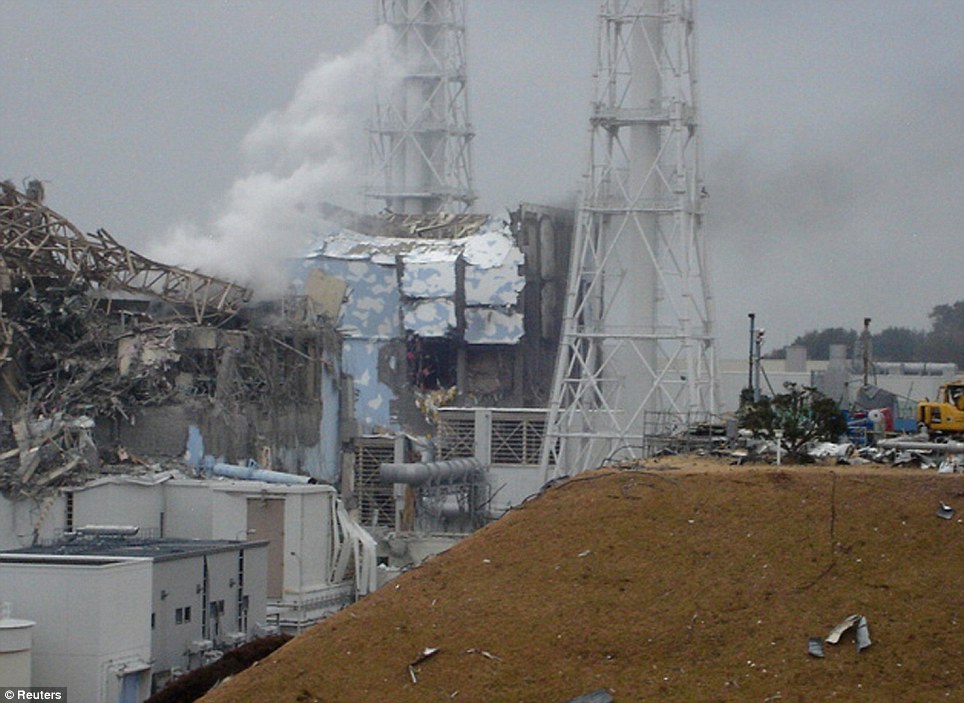
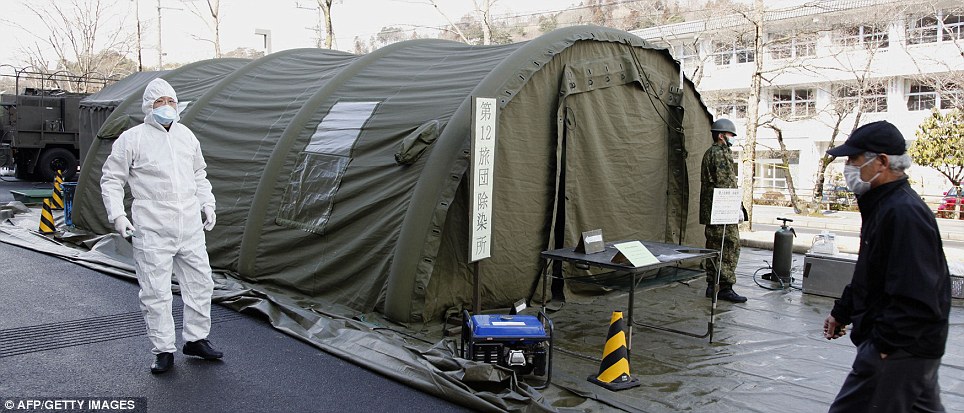
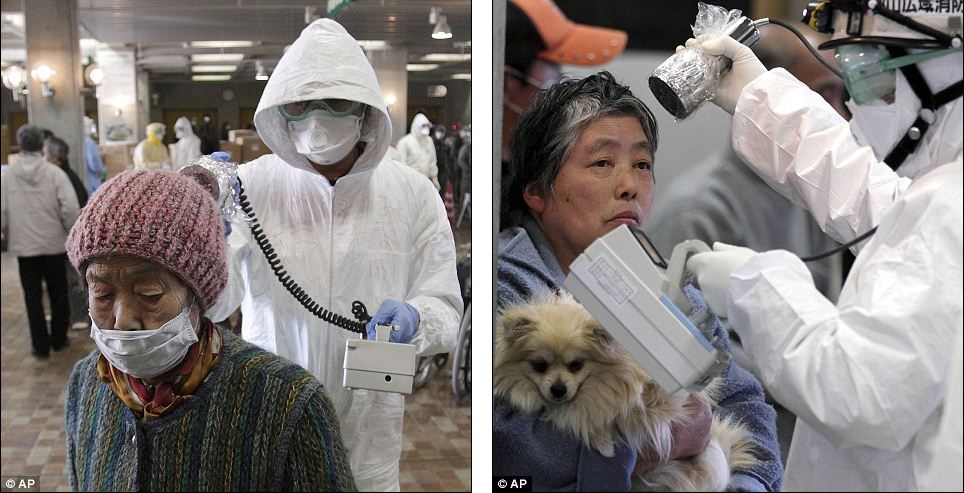
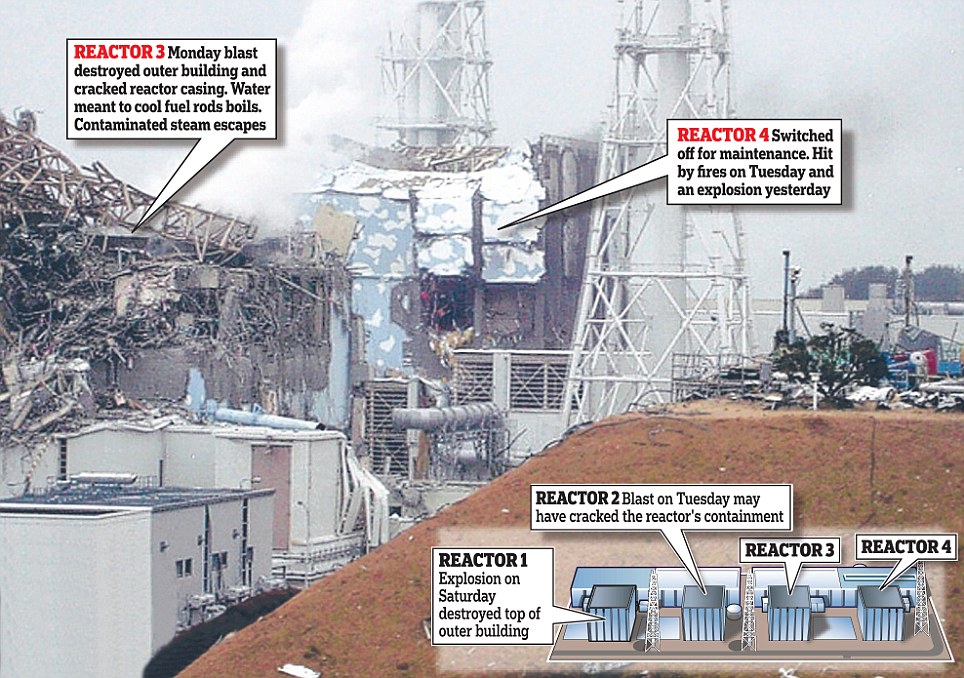
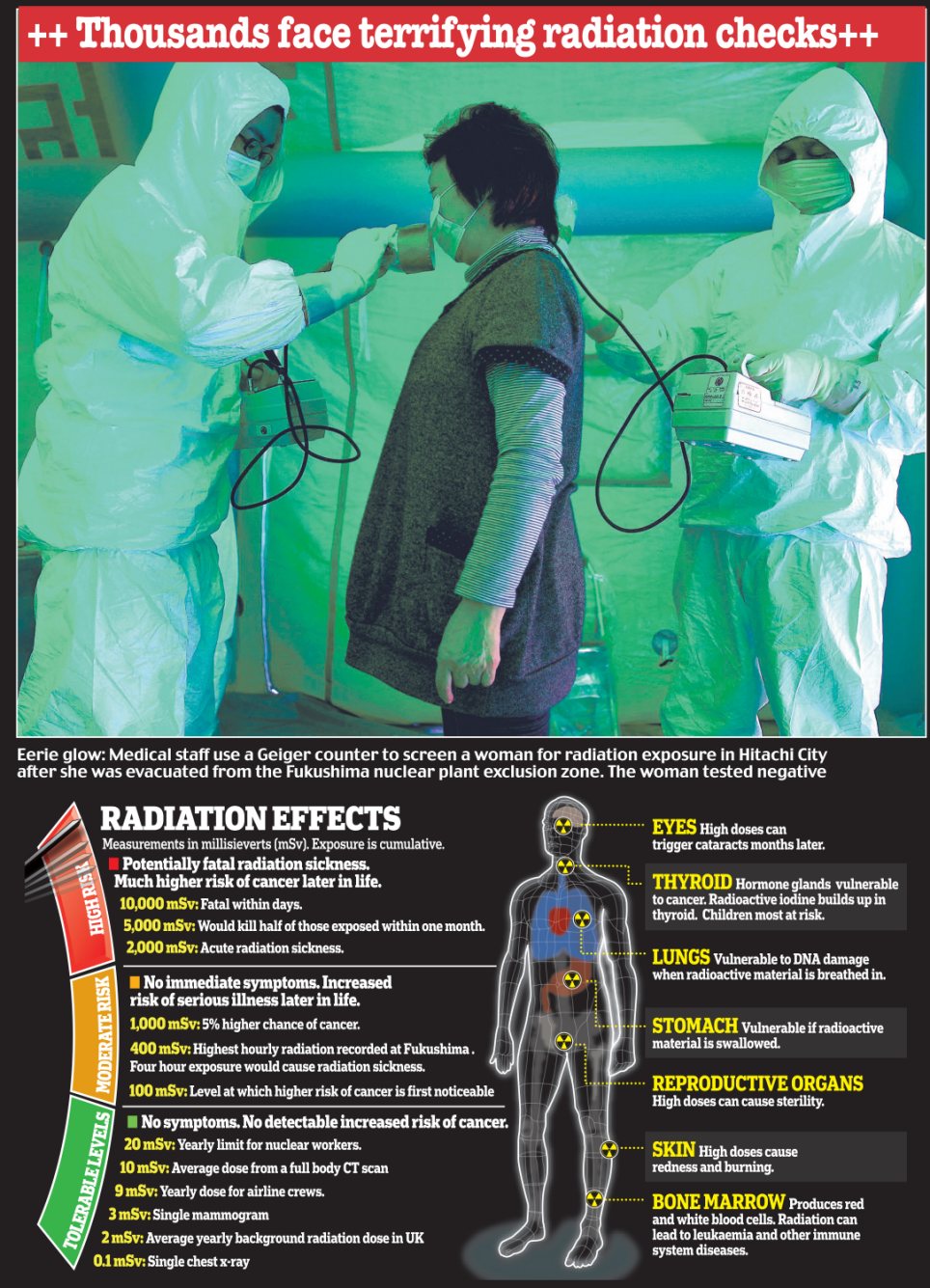




The worst imaginable disaster is about to happen. What this means to the world will be terrible indeed! People, animals and aquatic life over a vast area will suffer terribly.